Have a question for Josh? Email it to [email protected].
Well, boys and girls, today we have a question from frequent TTAG poster and reader EpsteinDIDNOTKillHimself regarding reloading cartridges. Our friend asks:
“The question I would like to ask: A K&M Arbor Press with the force pack, dial indicator and using L.E. Wilson dies better than other bench mounted presses and associated dies (e.g. Hornady, Lyman, Lee etc.)? Assuming all things equal, match brass, trimmed to length, necks turned, primer pockets trued and using match/micrometer dies.”
I’ve been reloading since I was 14 years old. I’ve probably loaded close to half a million rounds in just shy of two decades and I’ve tried or at least had some experience with most reloading setups available as the years passed. I’ve probably fired about 1.5 million rounds in my lifetime if we count rimfire in there (but some people don’t for some reason).
I may surprise some of you when I say that I’ve loaded about 99% of my ammo on a cheap Lee single stage press, in fact it was my very first press, a gift I got my freshman year in high school. To date I have had not a single press-related ammo-making error.
I still seat all my primers by hand and do my case polishing in an old vibrating tumbler. My methods are slow and tedious, but I have never made a handload that wasn’t accurate or consistent. I also use the old plastic Lee powder measure for some added shock value.
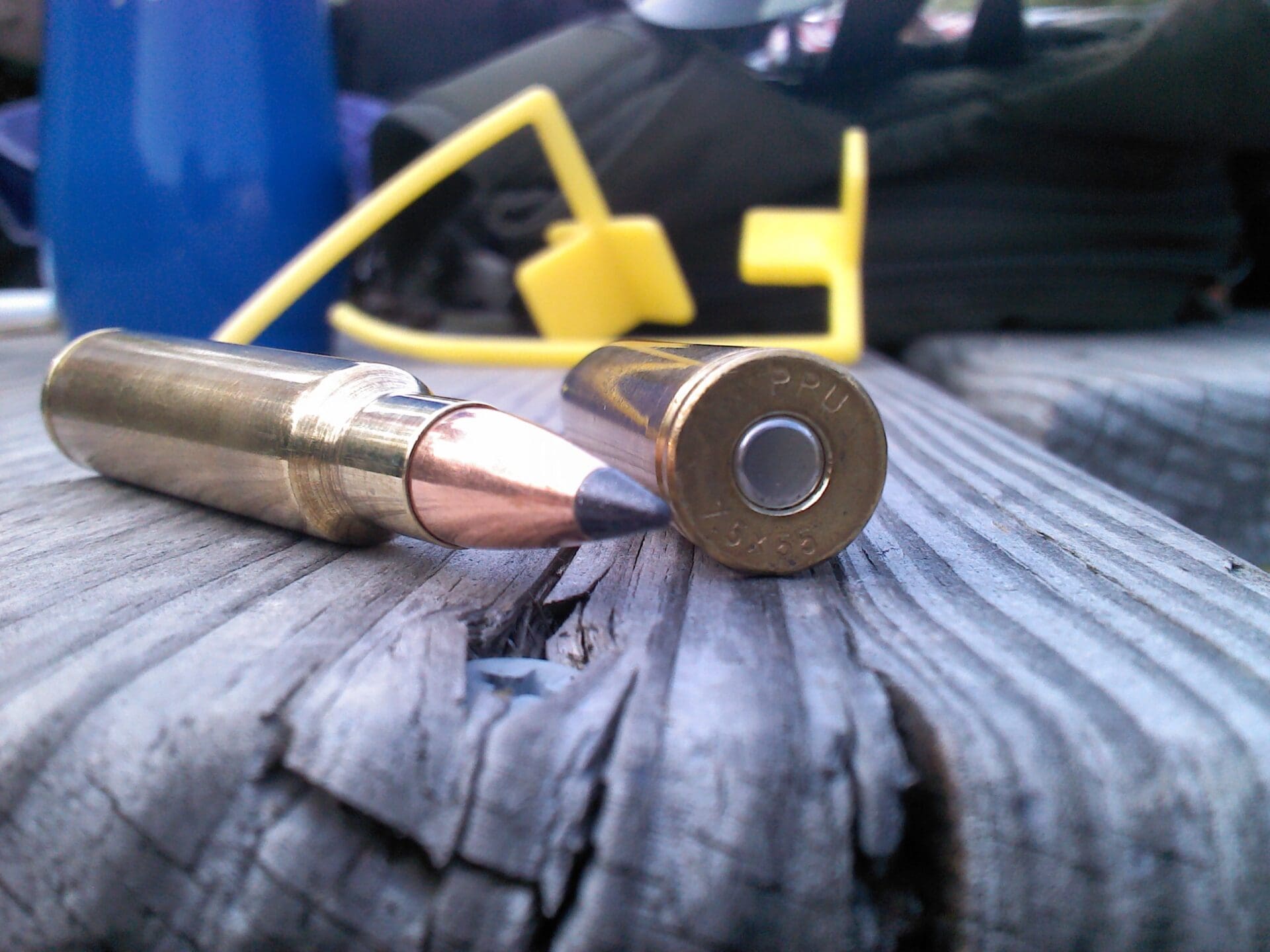
Yet, for all the hype around super precision loading dies and such, I find that ammo is something perplexing to many people out there, and it’s not the 95% scenario that worries people, but that last 5% that separates the casual loader from the ‘precision’ loader.
I’ll cover lots of ground here, so try to keep up, as it will get dicey in a couple places and it may be counter to what you know and understand about reloading practices and methods.
The first thing I want to address so I don’t get accused of a run-on article is the reader question. Our buddy Epstein here is essentially asking if what amounts to the best, arguably most expensive loading dies and setup is able to deliver ammo that is, for all intent and purposes, superior to the product of lesser components.
The basic answer is yes, in theory the arbor press is able to do that…with all things being equal. However, its superiority is relative to the individual doing the reloading.
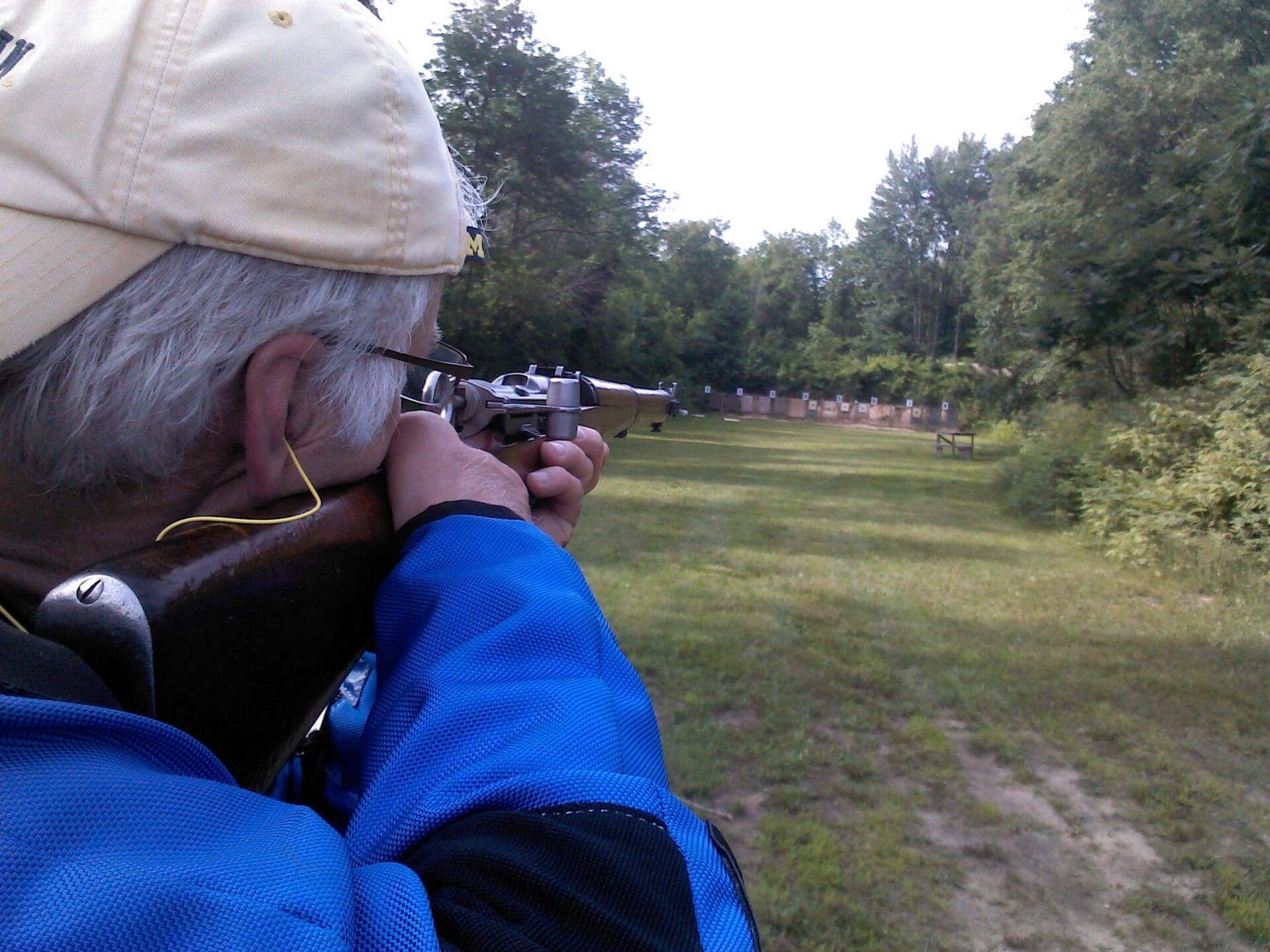
Why might that be? For starters I think it comes down to what you’re trying to achieve. The 95% of reloaders out there are usually doing it to save money or for a fun hobby. I fall into that camp for some ammo, such as handgun stuff where I really only shoot to about 50 yards, max.
For rifle, I make bulk ammo, but I feel incentivized to make it accurate, so I at least try to check on powder charge and velocity before I crank out 1,000 rounds. I usually load my ammo to SAAMI spec as I typically have more than one of each caliber, and I don’t want to freeze the bolt up or cause a jam with same-caliber ammo that has been neck-sized for just one rifle.
For the novices out there, neck-sizing makes the ammo suitable for just one bolt action rifle (this won’t work in an AR) and shaves time and steps compared to a full-length resizing. It can make the cartridges a bit more accurate as the body of the case will be formed to the chamber of the individual rifle.
You can get away with two to three firings on a neck-size only case, and after that it will get too tight and you’ll need to full-length size it back to factory spec.
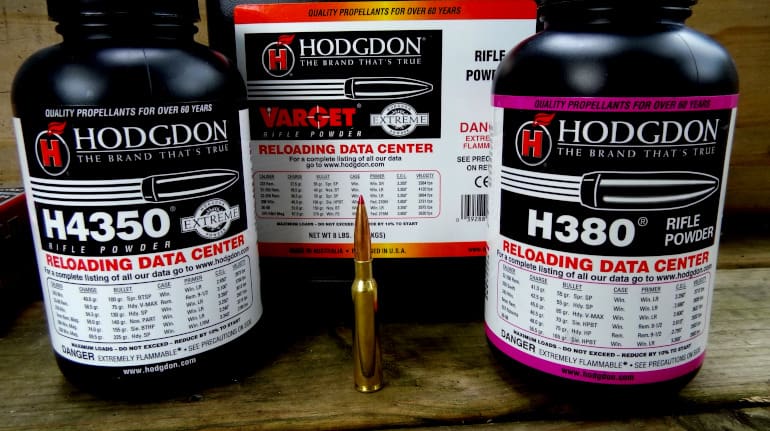
As far as accuracy per brand goes on presses and dies, I regularly shoot past 1,000 yards with high end rifles and scopes. I can’t say that I’m better than a guy loading his ammo with an arbor press, but I know that I am able to make ammo on my old Lee that shoots 1/2 MOA at 1,000 yards consistently. Wind and external factors are always present and, of course, my groups aren’t always that tight horizontally, but I never get worse than a 5” vertical spread at 1,000 with most my guns.
I’m also using mixed brass. I know some guys are cringing out there, but again, this is a 95% vs 5% situation. I’ve not measured significant enough velocity fluctuations in my ammo to need to switch to one brand.
I average my ammo across guns, and I have loads that do 3/4 MOA across the board for five 6.5 CM rifles. But of those five, two may shoot it to 1/4 MOA. I just don’t see the need to separate out cases when I’m not getting a velocity disparity any greater than 1% across guns and all averaged rounds fired.
In most of my rifles, the variance with mixed brass is only 25 fps, which is perfectly allowable for what I’m trying to achieve and it’s well within the allowable factory specs. Using like brass, I can run that number down to just 5 fps in many cases, but it’s just not really that noticeable on the target.
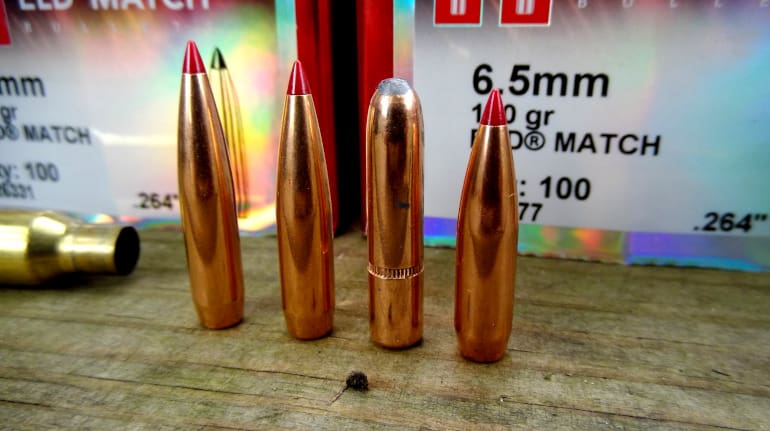
For powder I use a Lee plastic powder measure set just low. I have a very nice scale that makes up for my powder measure and I trickle in the last half grain on precision ammo. I will say, there isn’t much of a difference if I just throw it in the cases from the measure so long as the measure it set and not moved.
In a straight-up test I did a year or so ago, I loaded some 6.5 as accurately as I could, taking every possible step imaginable including weighing and sorting the brass and bullets. I also loaded mixed case with thrown powder and tested them. The result: I did’t detect all that much of a difference at 1,000 yards, despite the theory being that the ‘perfect’ ammo should have been more accurate. Hits were hits, and ever since then I have been happier cutting corners where I know I can cut them.
For the armchair experts out there, I know this may be frustrating that I’m offering this type of advice. I’m not a benchrest shooter and I don’t shoot with rifles that are designed for stationary gentleman’s matches. I’m looking for practical, repeatable accuracy and I’m loading ammo usually in batches of 1,000 to 2,000 rounds.
Batch accuracy is what I’m after here, not twenty rounds loaded at the range that day as the benchrest guys do it. Moreover, I think that type of tedium is just unnecessary for field shooting, where a 1 MOA rifle is really all you need. I don’t know many guys who can hold 1 MOA in field conditions anyway.

Chasing accuracy is a noble goal, but you also have to take into account the types of rifles that you’re using. I wouldn’t waste time with special gear and an arbor press with an AR. The AR just isn’t consistent enough to take advantage of what that press offers.
Now, my own 6.5’s are very accurate custom rifles capable of one-hole accuracy at 100 meters, and can repeatably print groups in the 2.5-5” range at 1,000 meters. My guns are mechanically accurate enough to take advantage of the equipment Epstein asked about, but I don’t bother with it because my ammo is consistent enough as-is to get my rifles within 95% of the guy investing more time and effort.
If I want to fight for that last 5%, I just pick the rifle in my safe that shoots that given handload lot better and now I’m picking off head plates at 1,000 all day. That may not be you, but it works for me and that is, at the end of the day, what the goal of reloading is: to make ammo that works for you.
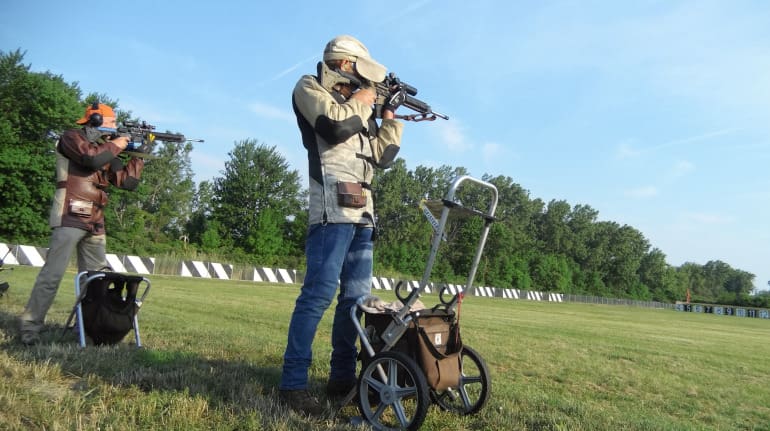
So, to close this, Epstein is generally correct that the arbor press and high end dies will yield better results in theory. The real-world answer is that not everyone will be able to take advantage of that kind of precision and will simply become bogged down in unnecessary minutia.
If your goal is ringing steel at 500 meters, you don’t need as much accuracy as you think; really just a consistent powder charge and bullet seating depth. If you want to print 1” groups at that distance, well, you’re embarking on a long and arduous road littered with rabbit trails such as, “Do I need to back all these out .001 or should I adjust the neck tension? Oh, man, what about the primer seating depth…I wonder if my powder is right for the atmosphere today….”
Reloading can be fun, but I’ve wasted thousands of bullets worrying about things that today I can’t be bothered to care about. Just have fun and keep your powder dry.
Have a question for Josh? Email it to [email protected].

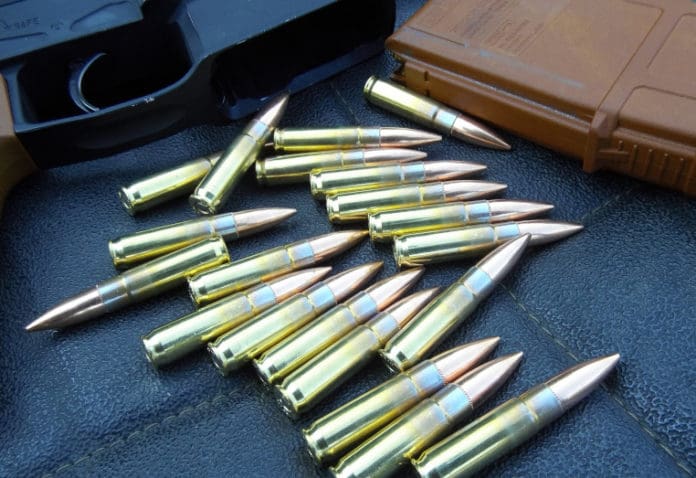
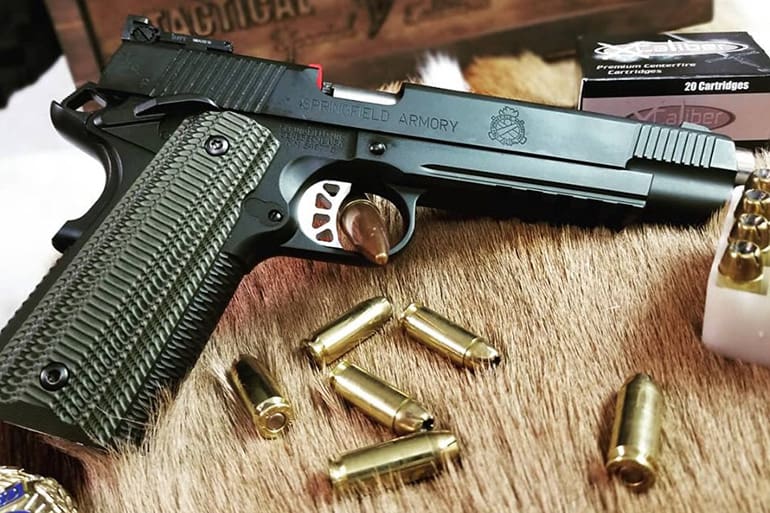


It’s all relative. Match the ammo to the gun to the shooter to the goal. This takes time, money, patients, reading, experimentation, and a driving will to reach whatever that goal is.
I would say that Epstein has reached perfection. Not because of his round count but from what he learned getting there.
It’s like so many other things. Cars are a great example. You can buy stock off the lot and never know anything else. If you want to expand your skills, you can build one from the ground up using exactly what you want. Like building a computer or an AR15. It’s all about what you learn and achieve in the process.
Buying the most expensive stuff does not make you or your stuff better. Just more expensive.
The question isn’t wether or not perfection is possible. The question is “what do you want?”.
Good article.
Reloading is fun and economical. Been doing it for years now. In college and Army Reserves I fired competition, but those days are years behind me. Now, I’m a paper plate shooter. I figure if I can keep my shots on a standard dinner-size paper plate (or gong) at any yardage I want to shoot, I’m good to go. Two hundred yards seriously stresses my old eyes if forced to peer over iron sights; so my typical ranging is less than that. My reloads print exceptionally well for my purposes. Errors can be virtually eliminated with care and applied routine. A quality chronograph is crucial to producing good repeatable reloads.
I heartily recommend reloading to any serious shooter.
If you’re into high-end comp, then of course you want the best you can afford. Same as with any other sport, so the question is “how precise/accurate/fast can you afford”?
Several true statements here – The wing nut making the round will most likely be the one on the trigger. Some have a knack, others don’t. Some listen to good training and others not so much. I started with the Lee “wack-a-mole” set -2 dies, a powder spoon & a hammer, in 38 Special in the 70’s. Then added a hobby arbor press to the mix. Great times. Still have the dies! Now (after a long dry spell) I, – WE, have a couple set ups in various colors and multiple dies, scales, + 2 for shotgun. I’ve gone down that Easter bunny hole chasing the last 5%. Can be fun, or frustrating, and time consuming. Some rifles or pistols just won’t respond as well as others.
A couple years ago I came across a benchrest shooter practicing. He was rolling his own right there on the bench, shoot 5, reload 5, check group, adjust, repeat. Must have had a wind flag out every 30 feet or so. Several rows of nickle sized dots on the target paper. I would of been very proud of every group he had already shot, all dime size or just over, many touching. . . . But HE wasn’t quite there yet.
Then my son took me to a shooting club range that had a benchrest champions target framed in the clubhouse. Two 6mm holes, overlapping. There were 10 shots thru those 2 holes. Best reloading I’ve ever seen! That’s- that last 5%
If you have to ask if you need a setup like that chances aren’t super high that you do.
Overall, my opinion FWIW is that it depends. As an example, even my basic .38/.357 ammo is more accurate than factory loadings by about 1/3rd based on blind testing and non blind testing I did. That stuff is just kind of cranked out on a proggy.
There’s a huge amount of art and science to reloading. Go watch as many of Erik Cortina’s videos as you can, he’s into super high end stuff but you can see with what he does where he does and doesn’t flex his tolerances.
Snipershide has a good reloading section as well with an awesome set of stickies that are highly advisable. As an interesting point of reference, there’s a LOT of people who are into Dillon 550s for their precision ammo, not a coax or similar press. Nothing against the Lee press the author mentions at all, I really liked my buddy’s Classic Turret.
If it was me and I was playing around at longer ranges where stuff gets interesting I’d be doing more research and buying less gear. Books are cheaper than rebuying equipment because the first stuff didn’t work. Much of the gear I’d buy would be measuring gear, not the actual loading stuff. Things like bullet selection have a huge impact on hitting what you’re shooting at while things like powder selection have a huge impact on being able to hit them consistently across strings of fire. Not only that but if you have the measuring gear you can figure out if you need better other stuff.
Otherwise the best advice I can give you is to change one variable at a time, test empirically and keep a log book with good notes of your loads and what they do for you (or don’t.)
I’ve been reloading for about 20 years. My goal is consistent bullseyes out to 300m, and in one telescopic rifle match to 400m.
I weigh and trickle every charge because I know if the charges are consistent to within 0.05-0.1 of a grain, I can’t blame the ammunition.
I’ll test weigh 20 projectiles in a batch and find even modern budget hunting bullets are remarkably consistent with only 2 or 3 of the 20 at most 0.1 of a grain less than the advertised weight. The only projectiles I’ve had to batch were surplus 62 grain SS109 spec which varied from 58-65 grains. I batched them into 1 grain lots and they were good enough for service rifle shooting. But they were very cheap at 3c each.
One of my favorite .308 loads uses a slow powder with a velocity of 2250fps, but very accurate and easy on the shoulder. Still puts holes in the target at 400m.
2250? You could really do a cast load like that too.
It’s a M96 receiver so I don’t want to stress it too much. At 400m it takes 0.7 of a second versus 0.5 for a more conventional load. And I don’t want to muck around with casting bullets either.
Care to share the specs (bullet, powder, etc…) for the .308 load you mentioned?
Disclaimer, for reference only.
150g JW Dwyer match projectile.
44.5g AR2209 powder (may be repackaged by Hogden or Vihta Vutori)
Winchester cases and standard large rifle primers.
Thanks.
Howdy all!
First and foremost, thank you Josh for your response and answer! Much appreciated.
I started and still use a Lee press and dies.
However, I have also experimented with exceeding COL to reduce bullet jump in order to see if I could find that sweet spot and improve accuracy. Note: I used to shoot NRA High Power back in the day.
Just prior to the COVID Crazy, I was considering looking into different press and dies to try something different. That is when I came across the K&M arbor press and LE Wilson dies. Hence my question.
Again, thank you Josh.
These are the kinds of things I got into shooting for in the first place. Right now we are all told to follow the science. Well, this is the science (of guns). Its more than just levers and springs. I appreciate articles like this so much more because of it.
Its like following the waves of heat within a steak as it cooked on the grill or watching the orchestra of radio waves in the signal of coax cable from the cable company.
I have loaded many 10’s of thousands of rounds.
The question that needs to be an answered is what is a perfect round.
For me it is one that functions and gets the job done that is called for.
Even than is it perfect. I can tell you it was perfectly good for job it was required to do.
I can also tell you a good pullet puller is a reloaders friend.
An excellent explanation why I quit trying to make precision long range ammo. That’s 1% of my shooting. I just pay for the good stuff. My first reloader was an unusual amazing quirk, a Star progressive. But I learned reloading 30.06 on a Vets Rock Chucker.
Loaded many thousands of Rd.’s of .38 special on a Star Progressive. Loaded those rd.s for our S.O . competition in PPC.
Was lucky enough to win Statewide in “77”, 299 out of 300 on a B-28 target. Brings back good memories. Still loading today, just not on the Star.
I’ve been working on .308 loads and concluded the biggest problem is me, I am not consistent enough, although everything goes downrange reliably and I can consistently hit 200 yard gongs. Now that the weather is nicer I may sacrifice my last box of factory match ammo to get a good baseline.
“Is It Possible To Load ‘Perfect’ Ammo? Should You Even Try?”
Absolutely, BUT, for your rifle/handgun only…
Factory ammunition is good, but handloads are better, especially if you carefully follow a regimen, do things the same way, every time, all the way from brass prep to weighing out projectiles to get the most consistent loads…
IF you are meticulous, you will get your “perfect” ammunition…
THANKS FOR INFOR , THATS SOME SERIOUS , LOADING .
THINK I MISSED THE BOAT ON SELF LOADING MY AMMO ITS THE KNOWLEDGE , MONEY , DON’T SHOOT ENOUGH OF HIGH / LARGER CALIBER AMMO .
Good discussion article. Thanks. Been Shooting over 65 years but only reloading the last 7. Chasing the prefect round in a bolt gun might be achievable, but in a gas gun forget it. No matter how perfect the round was when you put it into the magazine, AR chambering will weaken the perfection. AR Creedmoors or the new ARC, don’t waste your time. 300 Blackout quick and dirty reloading works just fine.
Good article. I started out with a Lyman Acculine kit, back in my university days, thinking I would upgrade once I had handloading figured out and had “disposable” income. Well, I checked off both those boxes, but never got around to upgrading until nearly 40 years later. Until last year, my Lyman built handloads flawlessly did what I needed them to do, so I felt no need to change. I just bought a Lee arbor press to size and gas check cast .44 & .45 boolits, but still use the little Acculine for loading. I don’t shoot high volume, or big magnum cartridges, or 4 digit distances, and I figured the extra money that higher end equipment costs would be better spent on components, i.e., practice.
I’ve been loading for many years. First for my 41 with a Lee loader. Not the easiest but it worked. Now it is with a RCBS Junior for the heavy lifting, a Lee breech lock for decapping and crimping, and a Dillon 550b for my generic 40 S&W. I have loaded many 223 and 308 with fantastic accuracy on the rifles. I clean now with stainless pins, I like bright brass. Lee Perfect Powder measure for developed average loads. I weigh all match and in developing loads. I get i/4 MOA in my 223 bench gun and less that i/2 MOA on my 308. It is possible to load very accurate food for your firearms. I have improved over factory by adjusting to each rifle. I have seen as low as single digit spreads on velocity on match ammo. I know some REAl shooters that still load on single stage presses. There is a feel to these over full progressive presses. I love my Dillon for generic pistol ammo but I still use the single for accuracy in the rifles. Just my two cents but I am glad that during this dry spell I have ammo in the raw, some assembly required.
I don’t shoot long range, but to me neck turning and uniforming primer pockets is too much like work. If I want perfect cases I’ll pay the money and buy Lapua. For everything else regular bulk brass is fine. I’ll also never use an arbor press. Unless you have a bench rest rifle with a custom tight chamber they aren’t worth the trouble.
I have had good luck with having the necks honed on my most used rifle dies (.223 Forster) to avoid over working the case necks.
Dad gave me an RCBS Rock Chucker single stage when I was younger. Have loaded thousands of rounds on it. The best addition for that has been an RCBS electronic powder trickle. That speeds up the really precise loads.
But all together I would say it takes probably total 2min per round to load considering brass prep, prime, and loading. So, it’s tedious, but passes the time. One suggestion I have. If you are using a Lee Autoprime, wipe it down every 100 primers. Primer dust is explosive, and I know of an instance of a Lee Autoprime exploding because someone didn’t read the warnings and instructions.
Happy Re-loading and shooting.
It doesn’t matter if I’m chasing X’s or venison. I do my development on a forster coax. Once I have found the load that meets my needs, the recipe goes in my data book and I fire up my Dillon 650. I don’t fuss over the perfect load. My 175 tipped matchking load shoots in the .6’s in my bolt action and 1.3’s in my AR10. One load does everything I need. I full length size my brass and don’t sort brass or bullets. X’s, white tail, and black bears with one load.
The most important investment you will make in reloading are your dies. Its the one part that interfaces directly with the finished product.
For FL sizing the important part is having the expander mandrel be floating so that it can self center in the case neck and not pull it out of alignment (Forster comes standard with this, Redding Type S you have buy their carbide button separate). If you are loading precision rifle rounds you’ll want to consider a die that takes different sized neck bushings so that you can tune neck tension.
For seating you want a micrometer adjustment and you want a die that has a cartridge specific sleeve inside of the die that supports the case body and bullet in perfect alignment through the entire seating stroke.
Everything else is just extra money spent on speeding up/simplifying the process. I still weigh all my charges for precision rifle rounds hand thrown on a simple beam scale. The proof is in the results… my current pet load for my match rifle prints .3-.4 MOA off a bipod with a rear bag and has an SD of ~4 and ES of 12fps (30rd average)… it just takes a long time.
I’ve friends that have dumped huge $$$$$ into fancy progressive presses and micrometer dies. I’m chided about still using my old Lee cheapie press and regular dies. When it comes time to look at the groups, you’d be hard pressed to tell whose is whose.
Sure, it takes longer, but I enjoy the process and the attention to detail, so time has never been a factor in why I reload.
And that 40 year old Lee cheapie press has never let me down, jammed up, gotten out of sync, or any of the other issues progressive presses can have.
And I know whose equipment’s paid for itself, and whose hasn’t.
2.5″ grps at a grand is pretty good shooting especially since a pending national record was just shot by an 80+ yr old of 100-10X on an IBS 1000yd target where the X ring is 2.5″.
Don’t worry jimmy james, I’ll cover this and more. There’s a difference between shooting a score and shooting a group. I don’t think I could hit a 2.5” anything at 1000 yards on purpose at least on the first try, but I’ve certainly put groups on paper and steel that, while tiny, were not necessarily in a perfect scoring ring. And yes, I do have rifles accurate enough to put five or ten shots on the head of an plate target at 1K, but there’s more to it than that. I’ll get into it in a full post next week or something.
Looking forward to that Josh!
Finally..
A respected article on a major website on reloading.
Yeah, you can change accuracy with bully type, speed, meplat and powder.
But that’s part of the fun of reloading. Finding that match to achieve the best accuracy you can wean out of a package.
THANK FOR NICE INFORMATION, VISIT OUR WEBSITE : https://telkomuniversity.ac.id/
Comments are closed.